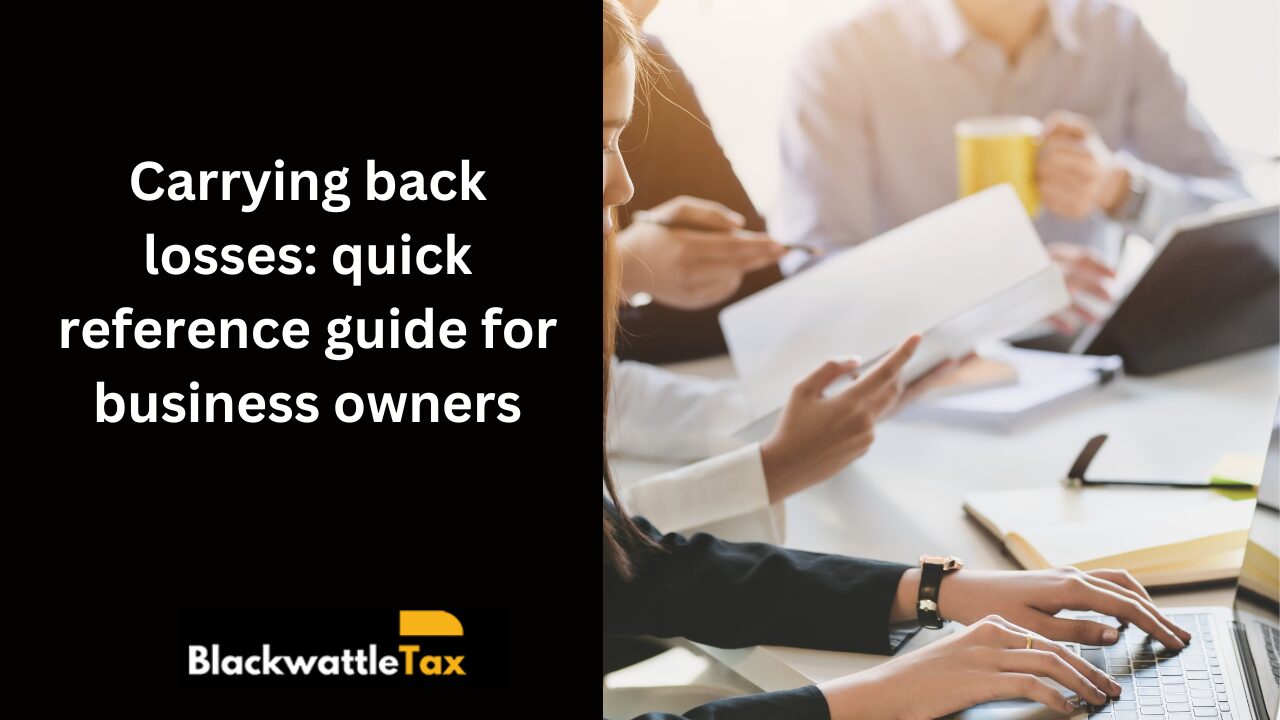To support businesses and enhance cash flow, the Government introduced the Loss Carry Back Tax offset as part of its COVID stimulus measures. This allows companies to generate cash through a tax refund by carrying back losses to offset prior-year tax liabilities, rather than only carrying tax losses forward.
This measure is particularly beneficial for companies that were profitable in the past but are now facing losses due to COVID-19 and the economic crisis.
All Business Owners Should Be Aware
The Loss Carry Back provisions, which allowed eligible corporate entities to claim a refundable tax offset by carrying back losses to offset prior-year tax liabilities, are no longer applicable for the FY24 income year.
This means that businesses can no longer utilize this measure to generate cash refunds, reduce tax liabilities, or decrease debts owed to the ATO for losses incurred in FY24 tax year.
Companies will need to explore alternative tax planning strategies to manage their financial positions for the current and future income years.
What Business Owners Should Do
If you’re a small business owner, it’s crucial to stay informed about tax provisions that can impact your financial health.
The Loss Carry Back provisions have offered significant benefits, but understanding how they apply to your specific situation can be complex.
To ensure you’re making the most of these provisions and apply them correctly to each tax year, reach out to your chartered accountant.
What is the Loss Carry Back Offset for Prior Years?
The Loss Carry Back provisions offer a refundable tax offset for eligible corporate entities. This loss carry back offset can be claimed after the end of their FY21, FY22, and FY23 income years, and in their FY21, FY22, and FY23 company tax returns.
Eligible entities can choose to carry back losses to earlier years with income tax liabilities. This offset represents the tax savings if the loss were deducted in the earlier year using that year’s tax rate. As a refundable tax offset, it may result in a cash refund, reduced tax liability, or debt reduction owed to the ATO.
Entities do not need to amend earlier income years to claim the Loss Carry Back offset. If an entity does not choose to carry back a loss, it may carry the loss forward to use in a later income year.
Entities can use the Loss Carry Back tax offset tool to determine eligibility and calculate the maximum claimable amount.
The Loss Carry Back is designed to interact with temporary full expensing, encouraging new investment that may result in tax losses. Choosing to carry back tax losses and receiving a tax refund can increase business cash flow.
Eligibility for the Loss Carry Back Tax Offset
To be eligible for the tax offset, you must:
- Be an eligible entity.
- Have incurred tax losses in the FY20, FY21, FY22, or FY23 income years.
- Have had an income tax liability in the FY19, FY20, FY21, or FY22 income years.
- Have fulfilled your tax return lodgement obligations.
Claiming the Loss Carry Back Offset
To claim the tax offset for a specific income year, you must make the loss carry back election when you file your company tax return for that year. At the same time, you will need to indicate the amount of tax loss you wish to carry back.













